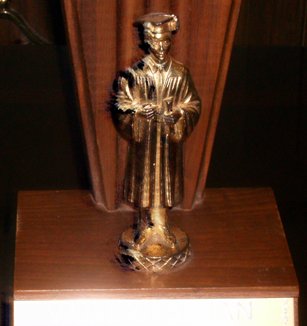Multitudes of people believe in reincarnation while multitudes of other people believe in the resurrection of the dead. Which one should people believe in?
The Bible plainly and emphatically teaches that people are not going to die and be reborn over and over again. It does so in various ways, especially by making known that Jesus died only once and that all people die only once.
Dying Only Once
Concerning Jesus, Scripture reveals that He died and God raised Him from the dead:
Rom. 6:9 Knowing that Christ being raised from the dead dieth no more; death hath no more dominion over him.
Jesus died only once; He will never die again! Death has no more dominion over Him!
Concerning all men, Scripture reveals that God has appointed that people die only once and are then judged by Him:
Heb. 9:27 And as it is appointed unto men once to die, but after this the judgment:
They do not die and then be reborn repeatedly, as reincarnation teaches.
These passages make clear that people should believe in the resurrection of the dead and not in reincarnation.
What about The Second Death?
Someone who is familiar with the Bible might object that the Bible speaks of the second death:
Rev. 20:11 And I saw a great white throne, and him that sat on it, from whose face the earth and the heaven fled away; and there was found no place for them. 12 And I saw the dead, small and great, stand before God; and the books were opened: and another book was opened, which is the book of life: and the dead were judged out of those things which were written in the books, according to their works. 13 And the sea gave up the dead which were in it; and death and hell delivered up the dead which were in them: and they were judged every man according to their works. 14 And death and hell were cast into the lake of fire. This is the second death. 15 And whosoever was not found written in the book of life was cast into the lake of fire.
Revelation 21:8 But the fearful, and unbelieving, and the abominable, and murderers, and whoremongers, and sorcerers, and idolaters, and all liars, shall have their part in the lake which burneth with fire and brimstone: which is the second death.
Why should we believe in the resurrection of the dead when the Bible itself speaks of a second death? Doesn’t this teaching about the second death support believing instead in reincarnation?
To answer these questions properly, consider that although a surface reading of this passage might lead some to conclude that it contradicts what Hebrews 9:27 says about people’s dying only once, a proper reading shows that it does not contradict what Hebrews 9:27 and other passages teach.
To understand why, note that Scripture teaches that physical death is the separation of the body from the spirit:
James 2:26 For as the body without the spirit is dead, so faith without works is dead also.
The second death, however, is when people who were already dead stand before God and are then judged by Him:
Revelation 20:12 And I saw the dead, small and great, stand before God; and the books were opened: and another book was opened, which is the book of life: and the dead were judged out of those things which were written in the books, according to their works.
In order for people who were dead to stand again, they must experience bodily resurrection.
The second death, therefore, is not when people will die again physically. Rather, these are people who will be cast bodily into a lake of fire.
The Bible’s teaching about the second death does not support belief in reincarnation—people must believe in resurrection, not reincarnation.
The Right Response to These Truths
Reincarnation teaches that people’s bodies die but their souls live on and that they are reborn physically. Jesus, however, warned people to fear God who has the ability to destroy both the soul and the body:
Matthew 10:28 And fear not them which kill the body, but are not able to kill the soul: but rather fear him which is able to destroy both soul and body in hell.
People who die physically are not going to be reborn again and again. They will die once and then stand before God to be judged by Him.
In view of these truths, God wants all people to know what He is commanding to all people everywhere:
Acts 17:30 God . . . now commandeth all men every where to repent: 31 Because he hath appointed a day, in the which he will judge the world in righteousness by that man whom he hath ordained; whereof he hath given assurance unto all men, in that he hath raised him from the dead.
People should not believe in reincarnation. God wants all people to believe in the resurrection of the dead and has provided proof that they should do so by raising Jesus from the dead and fixing a day in which He will judge the world by Jesus.
By Jesus, believe in God, who raised Him up from the dead and gave Him glory so that your faith and hope might be in God.
1 Peter 1:21 Who by him do believe in God, that raised him up from the dead, and gave him glory; that your faith and hope might be in God.
God wants you to believe not in reincarnation but in resurrection!
Copyright © 2011-2025 by Rajesh Gandhi. All rights reserved.










